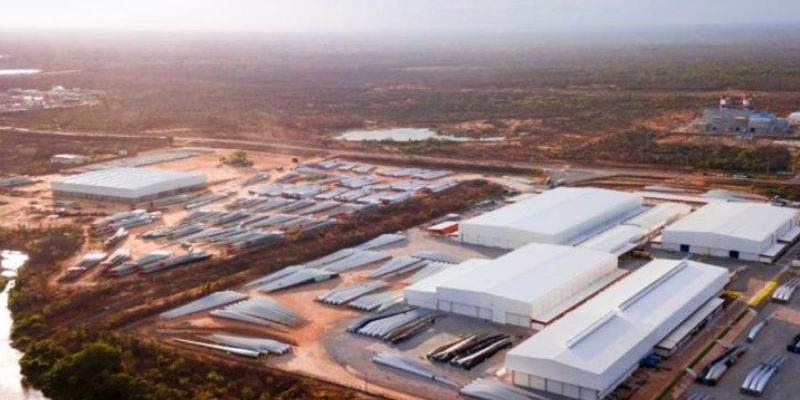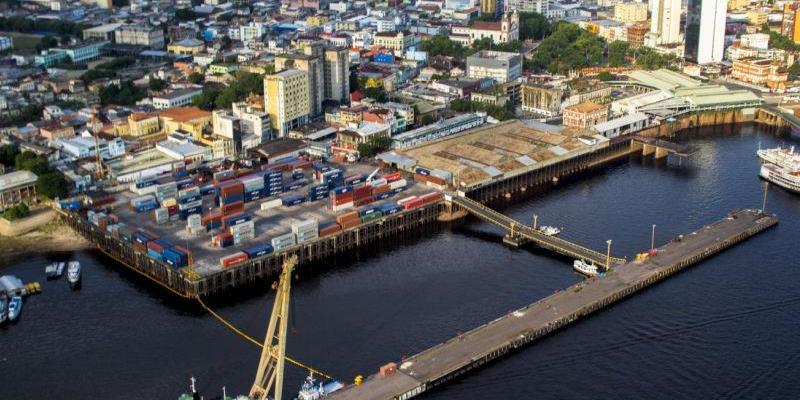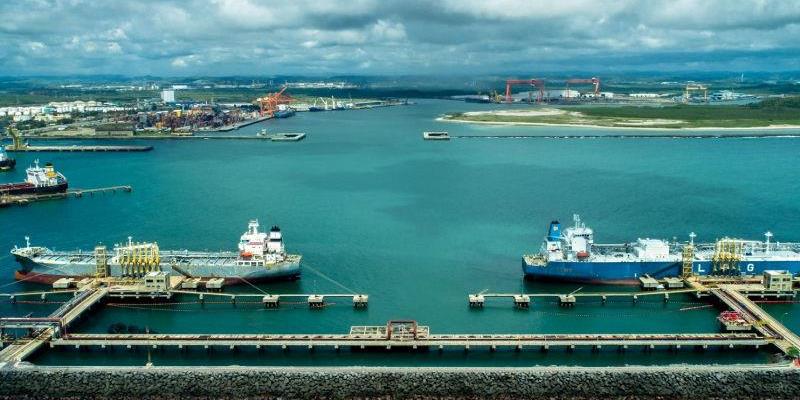What you need to know about the Port of Santos

Certainly, you have heard of the Port of Santos, the main port in Brazil and Latin America.
Also known as the Santos Port Complex, it is a set of numerous cargo and passenger handling terminals located along the coast of Brazil, specifically in the cities of Santos, Guarujá and Cubatão in the state of São Paulo.
But are you aware of the port’s history, its main characteristics and shipping data related to its operations?
If the answer is “no”, you are in the right place.
We are about to find the answer for such doubts and much more about this port that is so important to our country and our subcontinent.
Port of Santos and its geographical location
Estuary is a body of water usually found where a river meets the sea, and the Estuary of Santos is a natural stretch of water located about 70km from São Paulo capital.
To reach the complex the options vary between rail, road, and pipeline modes of transportation.
Road access is made through Anchieta-Imigrantes and Rio-Santos highways, while the rail access is possible by two networks, one from North, operated by MRS Logística, and the other one from South, by Rumo Logística.
The last option, through pipelines happens by the pipeline system operated by Transpetro, a public company under Petrobras’ transportation sector.
Port of Santos facilities bear almost 8 million m², that are essential for the flow of products from its area of influence that corresponds mainly to the states of São Paulo, Minas Gerais, Mato Grosso, Mato Grosso do Sul and Goiás, since the port represents the best logistical option for exporting from these places.
Importation through the Port of Santos is also profitable considering that it is in this region of the country where a large part of the Brazilian consumer market is concentrated. The state of São Paulo alone holds about 20% of Brazil’s inhabitants.
However, due to its strong presence in Brazil's trade balance, the port is also a good alternative for trade in other states, such as Paraná, Santa Catarina, Rio de Janeiro and Espírito Santo, mostly.

And such importance of the Santos port complex for our country's foreign trade is remarkable.
As a matter of fact, the Port of Santos was well placed in the ranking of the world's largest ports in 2016 issued by the American Association of Port Authorities (AAPA).
In the item that considered the total cargo handled in tons, the more than 113 million tons handled by the Port of Santos per year gave it the 35th position.
And in the container handling category, its record of 3.5 million TEUs (Twenty-Foot Equivalent Unit) handled annually placed the Port as the 39th ranked.
Port of Santos administration
The port is managed both by government agencies and by the private sector.
The area known as Porto Organizado (“organized port”) is under the responsibility of the federal government, with its limits established and modified by Ordinances.
The most recent that changed the jurisdiction of the Port of Santos was Ordinance no. 77, issued on July 30, 2020 and in force up to date, adapts the complex to the federal Law no. 12,815/2013, called the Law of Ports.
Within the limits of the Porto Organizado the terminals are under the jurisdiction of the Santos Port Authority (SPA), which was formerly known as Companhia Docas do Estado de São Paulo (CODESP).
It is the SPA that establishes the rules and regulations for the use of the port, but the public authority grants the terminals to the private sector through leasing processes that result in contracts defining the time of occupation, the total of private investments shall be made and other specific matters.
On the other hand, in the area outside the Porto Organizado, the government grants private companies the right of using the terminals for exports operations, which is the model of administration known as TUP (“Terminal de Uso Privado”, something like Terminals for Private Use).
History of the Port of Santos

The beginning of activities in the port complex of Santos dates to the distant past, in the beginning of the 16th century.
The operations of the port had rudimentary structures until the end of the 19th century, when the port administration was granted to the private sector. It was on November 7th, 1890, that the Concession Term created the Companhia Docas de Santos.
Ninety years later, in 1980, Companhia Docas de Santos returned the administration to Companhia Docas do Estado de São Paulo (CODESP), an agency of the Federal Government.
In the following years, the works of the first 260m of pier were carried out and its inauguration took place on February 2nd, 1982.
Later, on February 25th, 1993, ruled by the Law no. 8,930/1993, CODESP began to exercise the role of port authority, which was later transformed into the Santos Port Authority (SPA).
Port of Santos logistical information
The Port of Santos channel is 25km long and has 16km of piers built throughout its history.
With the infrastructure offered, the channel allows the navigation of vessels up to 340m in length and a maximum draft of 14.50m, that can dock in 60 berths and have access to 53 terminals.
According to Port's official website, the logistical numbers throughout this year are outstanding.
In June, more than 391,000 TEUs (Twenty-Foot Equivalent Units) were handled, 28.5% higher than that registered last year.
And the total numbers for the first half of 2021 also increased compared to 2020. In 2021, 2.4 million TEUs were handled between January and July, 18.5% more than registered in the first half of 2020. Continue reading to learn more about the Port of Santos logistical information.
Veja Também
 CONEXO’s 32nd Anniversary brings news of major changes
CONEXO’s 32nd Anniversary brings news of major changes
 AEO Certificate: What is it, its importance, and its benefits
AEO Certificate: What is it, its importance, and its benefits
 What you need to know about the Port of Pecém
What you need to know about the Port of Pecém
 Conexo has been awarded AEO Accreditation
Conexo has been awarded AEO Accreditation
 What you need to know about Port of Manaus
What you need to know about Port of Manaus
 What you need to know about the Port of Suape
What you need to know about the Port of Suape
